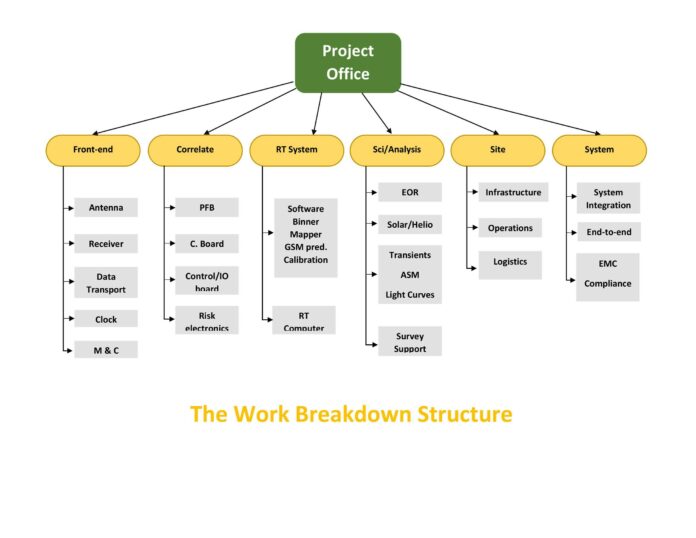Work breakdown structure is a tool that provides a detailed approach that completes complex projects by breaking them into smaller components. While most work breakdown structure mainly rely on deliverable-based approach, but it can be flexible.
These are a glossary of the most familiar terms that are used when mentioning work breakdown structure
Acceptance Criteria: Requirements should be completed in order to satisfy customers or other stakeholders
Budget: The costs involved with the project, which can be divided into phases or deliverables.
Deliverables: The goods, services, or outcomes produced throughout the course of the project. For instance, a deliverable-based WBS for a website design project would be organized around deliverables such the URL, layout, and textual content
Milestones: Project’s critical phases are listed in the WBS.
Phases: the different phases of a project. For example, a phase-based WBS for a website design project would be organized around concepts like exploration, design, and launch rather than specific deliverables.
Characteristics and Components of Work Breakdown Structure
One of the most identifying components of WBS is the 100% Rule. The 100% rule incorporates all parts of the project including the manager and the team working on it.
The levelling structure of WBS is another important feature. First level of the WBS will represent the entirety of the project when the 100% rule is applied. In certain WBSs, if a project isn’t self-explanatory, a description or overview is included at the top level.
The project is then broken down further at each level below it, applying the 100% rule at each level. For example, Level 1 of a WBS for a new website would be “Website for New Brand.” The deliverables needed to complete the project are broken down into level 2 parts, such as secure website domain, design layout, and content development. Every level after that keeps dissecting the components in further depth.
You Might Also like: WHAT IS THE CRITICAL PATH IN PROJECT MANAGEMENT?
Why Work Breakdown Structure is Useful?
For several reasons, the work breakdown structure is a useful project management tool. In the beginning, it divides the endeavour into digestible, bite-sized pieces, making it less intimidating.
Second, it offers a road map for the many people and teams engaged in the project. Many projects require multiple teams to work simultaneously, and for the project to be completed, they must all communicate and work together. The many individuals and teams can concentrate on their unique duties and deliverables while also understanding how their part fits into the project as a whole by adopting a WBS.
Finally, a WBS is a great tool for budget resource allocation, milestone identification, and project completion measurement. Project managers can be sure that their projects are correctly funded and that they won’t encounter any delays because of “surprise” deliverables by applying the 100% rule.
You might also like: WHAT IS SCRUM IN PROJECT MANAGEMENT
How To Create and Use a WBS Effectively
Remembering the above-mentioned “100% rule,” it is crucial to integrate all project components in a task breakdown structure while avoiding excessive complexity. It turns out that when it comes to the WBS, there can be too much of a good thing.
To develop a WBS:
- Define the project first. Clarifying the project is the first step in designing a task breakdown structure. This might be quite simple for some projects. For other projects, it can be necessary to narrow the project’s true scope in order to scale the WBS properly and prevent it from growing cumbersome.
- Establish project parameters. You can place restrictions on what is and isn’t included in the WBS once the project has been identified and characterised.
- List the deliverables for the project. High-level project deliverables like a Project Scope Statement or Mission Statement will be included in this.
- Specify Level 1 components. Keep the 100% rule in mind while you produce the Level 1 deliverables.
- Describe each of the Level 1 components in detail. Decomposition is the process through which Level 1 items are broken down. It entails segmenting a task into ever-tinier components and applying the 100% rule at each stage. Consider whether additional breakdown might enhance project management at each successive level.
- List the team players. Determine a person or group in charge of each component.
- Construct a Gantt chart to go along with the WBS. A Gantt chart displays activities over time so that information about the project’s schedule and its many activities can be seen clearly.
Check out or guide to PRINCE2: WHAT IS THE CRITICAL PATH IN PROJECT MANAGEMENT?
